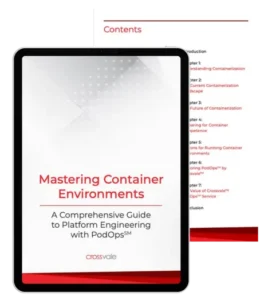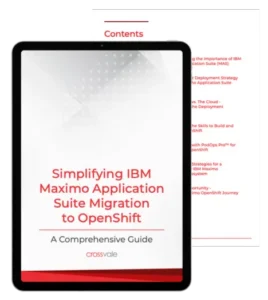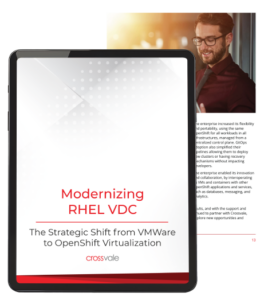Top 5 Mistakes – Running OpenShift Clusters!
SHARE THIS POST
INTRODUCTION
OpenShift Container Platform (OCP) allows many configuration options, so networking [mis]configuration can occur in a few places. There are multiple layers of interfaces that are created to correctly pass the traffic from one container to another. In order to debug connectivity issues, you have to test the different layers of the stack to isolate the problems. Below, you will find some common pitfalls to avoid when establishing and running OpenShift Clusters.
Mistake #1 - Choosing DIY Management
“No one wants to manage Kubernetes anymore”.
-Scott Carey, InfoWorld April ‘21
The big reason why is managing Kubernetes (or OpenShift, Red Hat’s Enterprise Hardened Flavor) is hard and many organizations are starting to realize they can better focus on other, as-yet unsolved engineering problems if they hand off a big chunk of their container orchestration.
When enterprises consider something strategic, the initial inclination is to run it themselves, then they realize over time as they acclimate that not only is it not giving them a competitive advantage, even more the vendors can run it better than they can.
A similar pattern playing out with Kubernetes / OpenShift today as previously occurred with databases and CRM, where no administrator would hand over their crown jewels to a managed provider—until they did.
Solution:
Don’t waste time trying to manage it yourself you will spend incredible energy on learning and finding resource to reinvent the wheel, when you can use a Managed Service Provider that can streamline the management, while leaving you in control of the outcomes.
Mistake #2 – Limiting your Managed Options to the Cloud Providers
The big three public cloud providers all have their version of the Kubernetes and OpenShift Managed Cluster. Though on the surface these services are convenient and provide an easy on ramp to get started. For many organizations handing over control, compliance and schedule of Production ecosystems to be dictated by the big public cloud providers becomes a problem.
Organizations that don’t invest the time into finding the right vendor and just go with what the public cloud providers offer, end up losing more control, wasting time conforming their workloads to meet the public cloud limitations and sacrifice owning their own schedule for platform events that become dictated by the provider.
Most organizations will still need an OpenShift Specialist to support root cause analysis and operational issue because the provider is only focused on the health of the cluster not the health of your workloads.
Solution:
Look for providers that focus on a complete service that includes providing expertise to help your organization’s workloads performance as an extension of your operations team so you can have OpenShift generalist (they understand at a high-level) and not need to invest the time and energy to consistently have OpenShift Specialist.
Mistake #3 – Moving Workloads from On-Prem to Cloud
Enterprises make the mistake that they must go to an external cloud provided option to receive the benefits of managed OpenShift. There are options to run clusters in your own data centers where you can capitalize on the hardware investments you have already made and still receive enterprise grade support.
This is especially usefully when you have already built your environments and have matured to the point that you understand it is more effective to have a managed cluster than to DIY it anymore. This usually happens after some staff that you have from the original build move on to other activities or other companies.
Owners of the on-prem clusters make the mistake of thinking they must scrap all the work they have done and migrate those workloads to the public cloud.
Solution:
Find a Managed Service provider that manages your workload anywhere. Whether you are running on-prem, hosted, cloud, private cloud… anywhere! Ensure you have the flexibility to run workload where you need them and capitalize on your investments you have already made.
Mistake #4 – Not Running Operational Assessment & Proactive Maintenance
Assessing and reassessing your OpenShift Ecosystem is a must have for all clusters. Organizations that do not have automated Operational Assessments designed and running to validate that the operational capabilities are healthy and supportable are risking an issue that could have been solved before there is a failure.
Also, your engineers or provider should be using automation to constantly build proactive maintenance routines that are customized to focus on workload health, not just if the cluster is healthy. It is easy to operate something that forces your workloads to fail if you are not complying with the cluster limitation (like you will find with the public cloud services), but what you need is a cluster that conforms to the workloads and provides automated live solutions.
Solution:
Your engineer or managed provider should be finding ways to build in proactive and operationally automated maintenance so your workloads are less prone to cause platform failures.
Mistake #5 – Not building in Auto-Scaling and DR
Building your clusters to have the proper auto-scaling and DR strategy that meets the needs of your workload failure risk requirements. We find most organizations to not think about how to create scalable clusters because they are used to static environments. But with OpenShift there is huge cost saving and workload performance gains if you understand the proper options to scale.
DR is not one size fits all and also may change as the workloads change in each cluster it is important to have a plan and an SLA that matches the expectations the stakeholders want. There a major cost differences, so building the wrong strategy can cost you in many ways. Building the right strategy provides peace of mind and reassurance that in the even to an anomaly that creates an event there is an operational procedure to limit the damage.
Solution:
Your Managed service provider or operations team should require your DR strategy to be in place to take on the management of your clusters and there are regular drills run and reassessment when new workloads are added.
How to not make these mistakes
Don’t reinvent the wheel over and over each quarter and continue to manage your own OpenShift Cluster, find a provider that delivers a complete manage service and helps you ensure these mistakes are not something you will need to pay for.
Crossvale provide a service that solves all these issues and much more, for more information go to https://crossvale.com/managed-services/managed-services-openshift/
Are your OpenShift Clusters vulnerable find out with Crossvales Operational Assessment. https://crossvale.com/contact/








